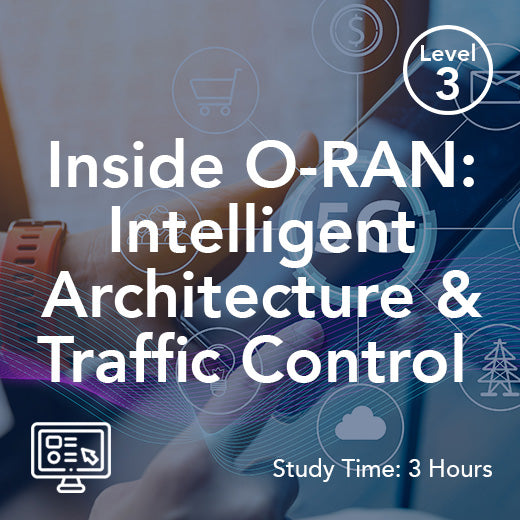How To Upgrade From 4G To 5G
- , by Stephanie Burrell
- 2 min reading time
In recent years, the telecommunications industry has been buzzing with excitement over the introduction of 5G technology. With promises of faster speeds, lower latency, and increased connectivity, 5G is set to revolutionize the way we communicate and interact with the world around us. But for many consumers still using 4G technology, the question remains: how do we upgrade to 5G?
The transition from 4G to 5G is not as simple as upgrading to a new smartphone or signing up for a new data plan. It requires a comprehensive understanding of the technology, the infrastructure, and the steps necessary to make the switch. In this article, we will explore the various aspects of upgrading from 4G to 5G and provide a guide for consumers looking to make the transition.
First and foremost, it is important to understand the differences between 4G and 5G technology. 4G, or fourth-generation technology, is the current standard for mobile telecommunications and offers download speeds of up to 100 Mbps. In contrast, 5G, or fifth-generation technology, promises download speeds of up to 10 Gbps, significantly faster than its predecessor. Additionally, 5G offers lower latency, meaning that data can be transmitted more quickly, making it ideal for applications such as virtual reality, autonomous vehicles, and the Internet of Things.
To upgrade from 4G to 5G, consumers will need to ensure that their devices are compatible with the new technology. This means that smartphones, tablets, and other connected devices must be equipped with 5G-compatible hardware in order to take advantage of the faster speeds and lower latency. Many new smartphones on the market are already 5G-ready, but older devices may need to be upgraded or replaced in order to access 5G networks.
In addition to upgrading devices, consumers will also need to ensure that their service providers offer 5G coverage in their area. While 5G networks are being rolled out across the country, coverage is still limited in many areas. Consumers can check with their service providers to see if 5G is available in their area and if there are any additional fees or requirements for upgrading to the new technology.
Once devices are upgraded and 5G coverage is confirmed, consumers can begin to enjoy the benefits of the new technology. From faster download speeds to improved connectivity, 5G offers a host of advantages that will enhance the way we communicate and interact with the world around us. Whether streaming videos, playing online games, or connecting with friends and family, 5G technology promises to revolutionize the way we use our devices and access the internet.
In conclusion, upgrading from 4G to 5G is an exciting opportunity for consumers to take advantage of the latest advancements in mobile telecommunications. By understanding the technology, ensuring compatibility, and checking for coverage, consumers can make a smooth transition to 5G and enjoy the benefits of faster speeds, lower latency, and improved connectivity. As 5G networks continue to expand and evolve, the possibilities for innovation and communication are endless, making the upgrade a worthwhile investment for the future.
The transition from 4G to 5G is not as simple as upgrading to a new smartphone or signing up for a new data plan. It requires a comprehensive understanding of the technology, the infrastructure, and the steps necessary to make the switch. In this article, we will explore the various aspects of upgrading from 4G to 5G and provide a guide for consumers looking to make the transition.
First and foremost, it is important to understand the differences between 4G and 5G technology. 4G, or fourth-generation technology, is the current standard for mobile telecommunications and offers download speeds of up to 100 Mbps. In contrast, 5G, or fifth-generation technology, promises download speeds of up to 10 Gbps, significantly faster than its predecessor. Additionally, 5G offers lower latency, meaning that data can be transmitted more quickly, making it ideal for applications such as virtual reality, autonomous vehicles, and the Internet of Things.
To upgrade from 4G to 5G, consumers will need to ensure that their devices are compatible with the new technology. This means that smartphones, tablets, and other connected devices must be equipped with 5G-compatible hardware in order to take advantage of the faster speeds and lower latency. Many new smartphones on the market are already 5G-ready, but older devices may need to be upgraded or replaced in order to access 5G networks.
In addition to upgrading devices, consumers will also need to ensure that their service providers offer 5G coverage in their area. While 5G networks are being rolled out across the country, coverage is still limited in many areas. Consumers can check with their service providers to see if 5G is available in their area and if there are any additional fees or requirements for upgrading to the new technology.
Once devices are upgraded and 5G coverage is confirmed, consumers can begin to enjoy the benefits of the new technology. From faster download speeds to improved connectivity, 5G offers a host of advantages that will enhance the way we communicate and interact with the world around us. Whether streaming videos, playing online games, or connecting with friends and family, 5G technology promises to revolutionize the way we use our devices and access the internet.
In conclusion, upgrading from 4G to 5G is an exciting opportunity for consumers to take advantage of the latest advancements in mobile telecommunications. By understanding the technology, ensuring compatibility, and checking for coverage, consumers can make a smooth transition to 5G and enjoy the benefits of faster speeds, lower latency, and improved connectivity. As 5G networks continue to expand and evolve, the possibilities for innovation and communication are endless, making the upgrade a worthwhile investment for the future.

































